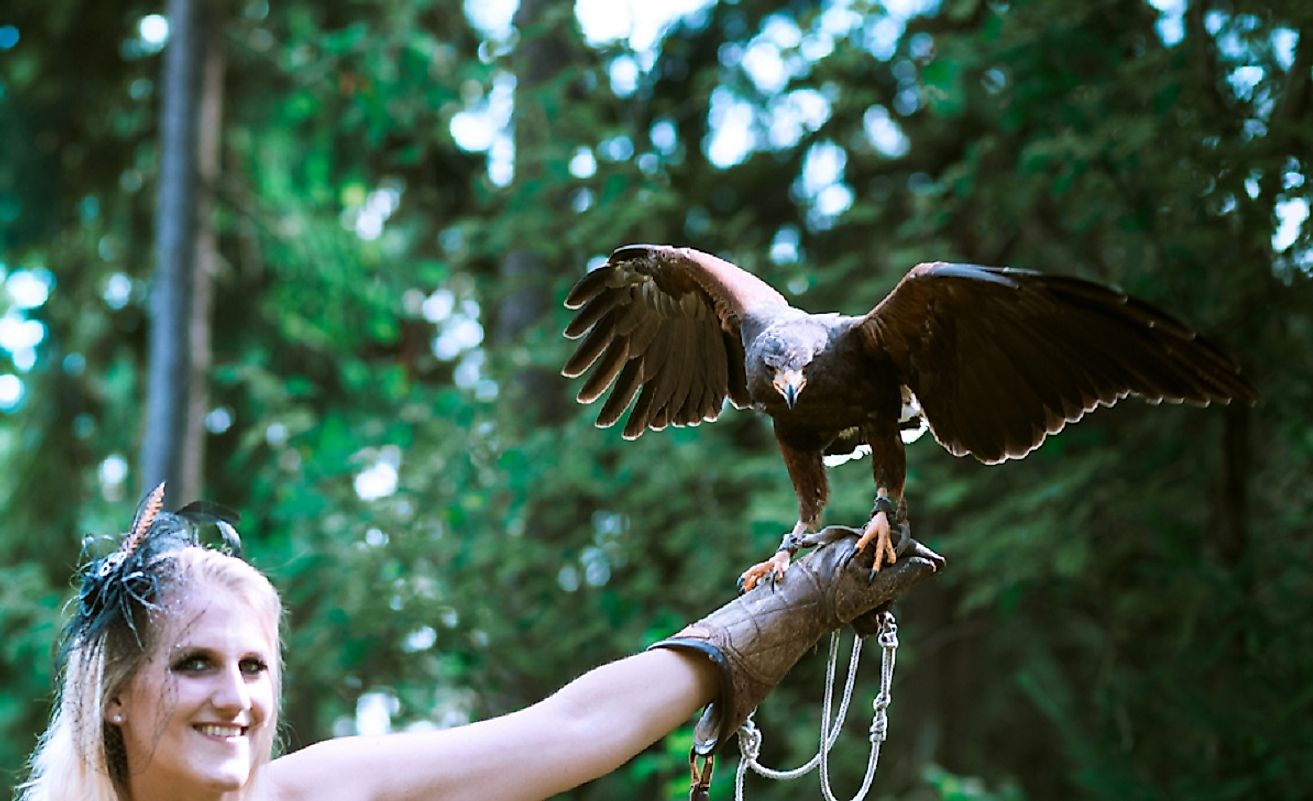Harris's Hawk Facts: Animals of North America

5. Physical Description
The Harris’s Hawk (Parabuteo unicinctus), otherwise known as the “Dusty” or “Bay-Winged” hawk, is the common name of a relatively large bird of prey that lives across a range that extends from the southwestern United States southward into the southern half of South America. These hawks stand out prominently, with bold markings of dark-brown, chestnut, red, and white. They have relatively long, yellow legs, as well as yellow markings on their faces. They also have a white-tip on their tails, and adults range in length from 1.5 to 1.9 feet (46 to 59 centimeters), with wingspans generally spanning between 3.4 and 3.9 feet (103 and 120 centimeters). The females are larger in size than the males by about 35%. The three subspecies of the Harris’s Hawk include P. u. harrisi, found in Texas, Central America, and Mexico, P. u. superior, which live in western Mexico and Arizona, and P. u. unicinctus, which, in the wild, live exclusively on the South American continent and are smaller than their North American cousins. Harris’s hawks belong to the same genus as the White-Rumped hawks of South America. Their scientific name, Parabuteo unicinctus, is derived from Latin and Greek words loosely translated as meaning “similar to a buzzard with a single girdle” referring to the white band around the tip of each of their tails.
4. Diet
These birds of prey predominately feed upon a diet of vulnerable creatures comprised by lizards, large insects, small mammals, and other smaller birds. The hawks often hunt in groups of up to six, and can therefore take down larger prey such as jackrabbits, desert cottontails, or great blue heron. For this reason, they have certain features adapted to this function, such as stronger and larger feet with long talons, as well as larger and more prominent hooked beaks, as compared to most other raptors around their size to allow them to handle such large kills. When hunting, they often subdue their prey by surrounding it and flushing it out for others to catch, or literally taking turns to chase it into a state of exhausted submission. The hunting groups normally comprise two to six hawks.
3. Habitat and Range
Harris’s hawks occupy mostly open habitats, including sparsely covered woodlands, semi-arid regions, mangrove swamps and marshlands. These birds are permanent residents and do not migrate readily. They are largely found in North America, though some have been reported in Western Europe, but this is likely due to the fact that it is also a popular species in falconry, and therefore may have escaped from falconers’ in captivity. When constructing their nests, they prefer scattered, large trees. Other potential homes with features desirable to the hawks include woodland edges, standing dead trees, power poles, and even boulders. The Harris's hawk is not currently listed as one of the threatened or endangered species of birds, and this can be attributed in part to the fact that they build their nests so high up off the ground and therefore cannot be easily reached by predators. Their social nature also gives them strength in numbers, and they can easily give alarm calls to warn others and harass their potential predators such as coyotes, ravens and the great horned owls. Indeed, rarely hunted themselves, Harris’s hawks are often used for falconry, wherein humans train birds of prey to hunt, kill, and retrieve game for them. Nonetheless, their wild populations have become increasingly susceptible in recent decades, due primarily to habitat loss resulting from human land-development activities.
2. Behavior
As opposed to other solitary raptors, the Harris’s hawk is a fairly social bird and, as mentioned earlier, often lives and hunts communally. They also have a relative ease around humans, a fact that has made them popular among falconers and in aviaries and other bird educational settings. Their social nature also facilitates cooperation when attending nests. Young Harris’s hawks may “fledge” (be physically developed enough to fly) anywhere from 45 to 50 days after hatching. On average, a Harris's hawk will live for between 15 and 20 years.
1. Reproduction
The female hawk does most of the incubation, and the eggs will normally hatch in 31 to 36 days. When mating, it has been observed that two males often attend to one female, though it is not particularly clear what the role of the second male usually is. The chicks begin to explore outside the nest at around 38 days of age. The female Harris’s hawk may breed twice or thrice a year, and they are known to be protective of their young ones, staying with them for up to three years.











